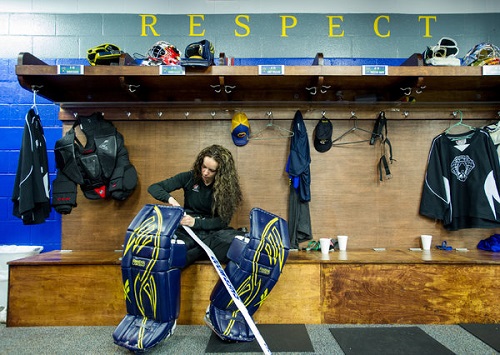
Canada claimed the Gold medal in Women’s Olympic Hockey in Sochi. While the USA put up a great fight, and threw gasoline on a rivalry that will carry over to the next Olympic games, Canada does have a toehold in higher levels of Women’s hockey.
The National Women’s Hockey League was established in 1999, taking the place of the old Central Ontario Women’s Hockey League. The NWHL expanded mostly through Canada, with the only American team being the Minnesota Witecaps. The league only lasted nine years and was dismantled at the end of the 2006-07 season.
From there, professional women’s hockey grew into the Canadian Women’s Hockey League and is still in operation today. The CWHL has only five teams, fewer than the NWHL, but the Boston Blades call America home. Many of these athletes compete at the NCAA level, but have nowhere to move beyond that.
While these leagues allow for a great foundation in women’s professional hockey and can further the sport, neither is deeply rooted in the US. Touches into the states with a handful, or less, of teams don’t constitute a deep root for this branch of the sport.
Simply stated, while the majority of NHL teams have homes in the United States, there is little to no representation of professional women’s hockey in America.
For the fifth time in Olympic history, either the US or Canada would be taking home the Gold medal. Clearly these two nations have control of high caliber women’s hockey. America won the first gold medal between the two nations in Nagano in 1998. The only time America didn’t take home either the gold or the silver medals was in 2006 when Sweden forced America to take home the Bronze.
With Canada and America dominating the sport, it has caused some ripples from other nations. Noora Raty, goaltender and long-time women’s hockey player from Finland summed up the international situation well.
“In fact, I don’t feel that women’s hockey can grow or get any better in the future if the USA or Canada don’t get a professional league started soon. That is the next critical step that our sport needs to take or our sport will never be respected like it should be. Asking players to work full-time and then training like a pro athlete at the same time is just too much and unfair.”
James Neveau of NBC published an article on the topic. “If the future of women’s hockey is going to be secured, then it would be a prudent idea to either start a new league, or to expand on the current CWHL.”
Neveau hit the nail on the head when he would go on in his article to link women’s hockey with the WNBA. David Stern, former NBA commissioner, put in the legwork to get the WNBA up and running and, while it doesn’t have the same ratings or revenue as the NBA, is currently successful in itself. Neveau also mentions how several women’s soccer leagues have started up with success after Team USA’s performance at the 1999 Women’s World Cup.
This year’s Olympic performance in Sochi between the USA and Canada is the women’s hockey equivalent.
Women’s hockey needs a professional league with a wider expanse than what it has now. NCAA stars have to have another level to show off their talents and advance their careers alongside the international games. It’s time for women’s hockey to take it’s place as a heart-pounding, edge-of-your-seat sport, as all doubts have been passed over during each Winter Games.
The rivalry between the ladies of the USA and Canada in these games was heated; is still heated. People are already talking about looking forward to the match-ups in the next Olympics, and all this is happening while the men are still in competition.
Women’s hockey is boiling-hot and starting to overflow. A unified, widespread, professional league for these women to compete in, full-time, after the intensity of college athletics, is what’s needed to carry these women further in the sport of hockey.
Shannon Szabados, Canada’s gold medal winning netminder, is making attempts to push the envelope. She made her professional hockey debut with the Columbus Cottonmouths of the Southern Professional Hockey League recently. Though her first game was a loss, the performance was a win. Not only did she stand tall against 27 shots, but she stood tall in making her case for women in pro hockey.
New barriers will be broken, the fan-base will expand, new sources if revenue will flow, and most importantly, girls involved in youth hockey will have the same dreams and same possibilities as boys will. Being an Olympian, playing hockey for your country is an ultimate dream shared by both boys and girls. Playing professional hockey for an entire career is a possibility only held by boys, and that needs to change.
